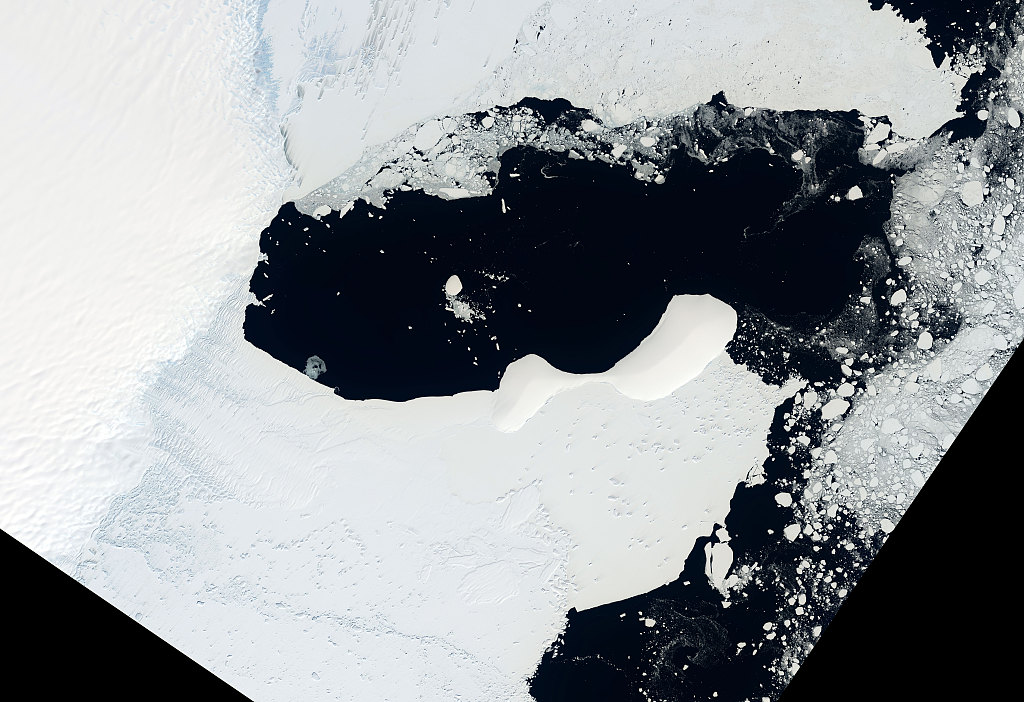Sixty-five percent of Antarctica's native species, emperor penguins top among them, will likely disappear by the end of the century if the world continues its business-as-usual ways and fails to rein in planet-warming fossil fuel emissions, according to a study published Thursday in the journal PLOS Biology.
The study shows that the loss of sea ice threatens several species of marine seabirds, such as emperor penguins and Adélie penguins, which rely on the ice from April to December to nest their little ones. If the ice melts earlier or freezes later in the season due to rising temperatures, it can be difficult for penguins to complete their reproductive cycle.

The Southern Ocean sea ice coverage has fallen below 2 million square kilometers for the first time since satellite measurement began more than 40 years ago. /CFP
The Southern Ocean sea ice coverage has fallen below 2 million square kilometers for the first time since satellite measurement began more than 40 years ago. /CFP
Antarctica's sea ice is dropping more rapidly now than decades prior. Data from the U.S. National Snow and Ice Data Center in February this year showed the Southern Ocean (the body of water encircling the continent of Antarctica) sea ice coverage had fallen below 2 million square kilometers for the first time since satellite measurement began more than 40 years ago.
According to a study published in August in the scientific journal Nature, if the global temperature rises more than the 2 degrees Celsius limit set by the Paris Climate Agreement, the ice sheet in Antarctica could cause "several meters" of sea-level rise over centuries.
If emissions remain high beyond that, the East Antarctica Ice Sheet (EAIS) could contribute around one to three meters to global sea levels by 2300, and two to five meters by 2500. However, if emissions were dramatically reduced, EAIS could contribute around two centimeters of sea level rise by 2100.
(Cover image via CFP)
(If you want to contribute and have specific expertise, please contact us at nature@cgtn.com.)